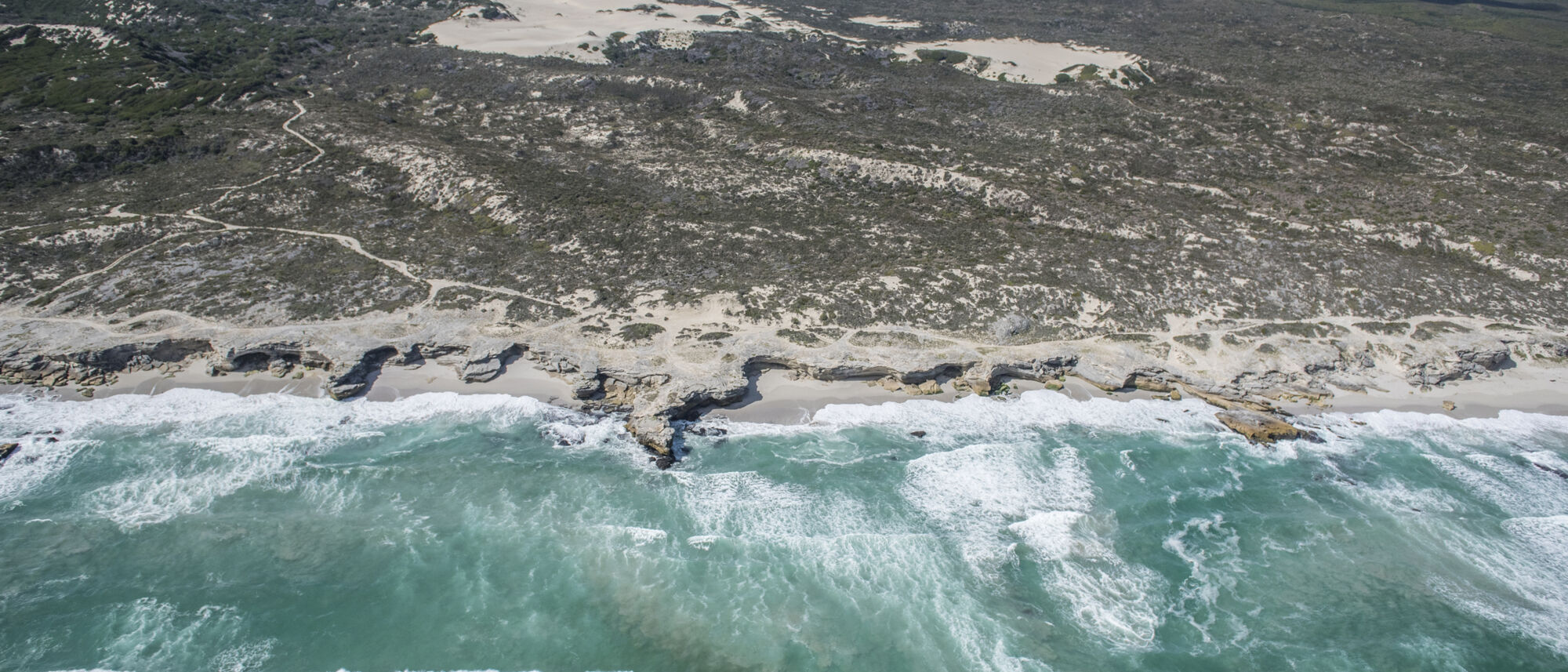The barnacles of history cling to Africa’s southernmost tip: from the early humans who eked an existence here to the fish traps of subsequent Khoisan arrivals, and, much later, the survivors of shipwrecks washed ashore on this wild coast. Millennia of human habitation give a nostalgic cast to the land: from Stone Age remains to fisherman’s cottages and grand Cape Dutch homesteads.
I started my Overberg journey more than 60 000 years ago. Klipgat Cave in Walker Bay Reserve has offered up the artefacts of Middle Stone Age people who probably used this ‘dwelling’ off and on for tens of thousands of years. The shell middens attest to centuries of survival off the inter-tidal zone by later Khoisan clans. Standing in the mouth of the cave, I imagined our ancestors combing through the rock pools, perhaps hunting the occasional seal and spearing fish.
Close to Klipgat is another cave, one that gives its name to the town: De Kelders (‘the cellars’). I entered the limestone cavern – helmet and head torch probing the darkness – with a guide. Bats clung to the ceiling and water dripped from stalactites. ‘Lady Anne Barnard was one of the first Europeans to visit here in 1798 and bathed in the mineral springs,’ said my guide. ‘The water temperature remains absolutely constant in both winter and summer, and the flow is not affected by drought.’
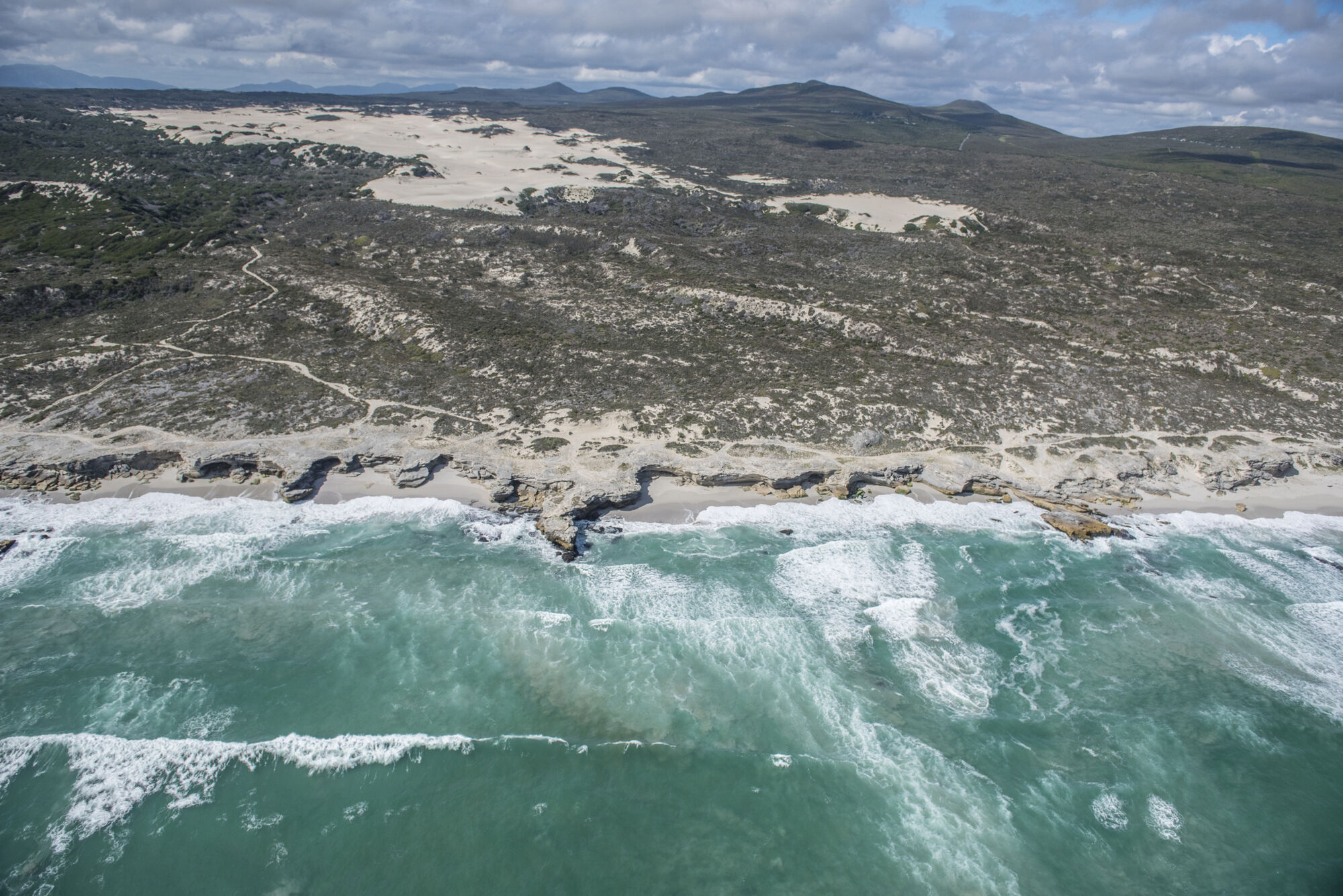
📍: De Kelders Klipgat
📸: Justin Fox
My guesthouse for the night, Cliff Lodge, was on a nearby precipice overlooking Walker Bay. From the deck it seemed as though coastal artillery was in action, what with the booming of waves and puffs of spray from southern right whales. On the horizon, Cape Hangklip looked like an island cut-out against the setting sun.
Next morning, I headed further south, past Danger Point Lighthouse – overlooking the spot where the ill-fated HMS Birkenhead was wrecked in 1852 – to Franskraal’s quaint Strandveld Museum. It represents a humble Overberg cottage as it would have been in the 19th century. The museum has Birkenhead artefacts, moccasins worn by seal clubbers and old photos of Gansbaai when it was still just a cluster of fishing cottages. I learnt about the days when Dyer Island, just off the coast, was a UGGI (Union Government Guano Island): workers from throughout the district would gather at this cottage to be ferried to the island in a sailing dinghy. There they’d spend lonely months harvesting the guano, cut off from the outside world on a barren isle.
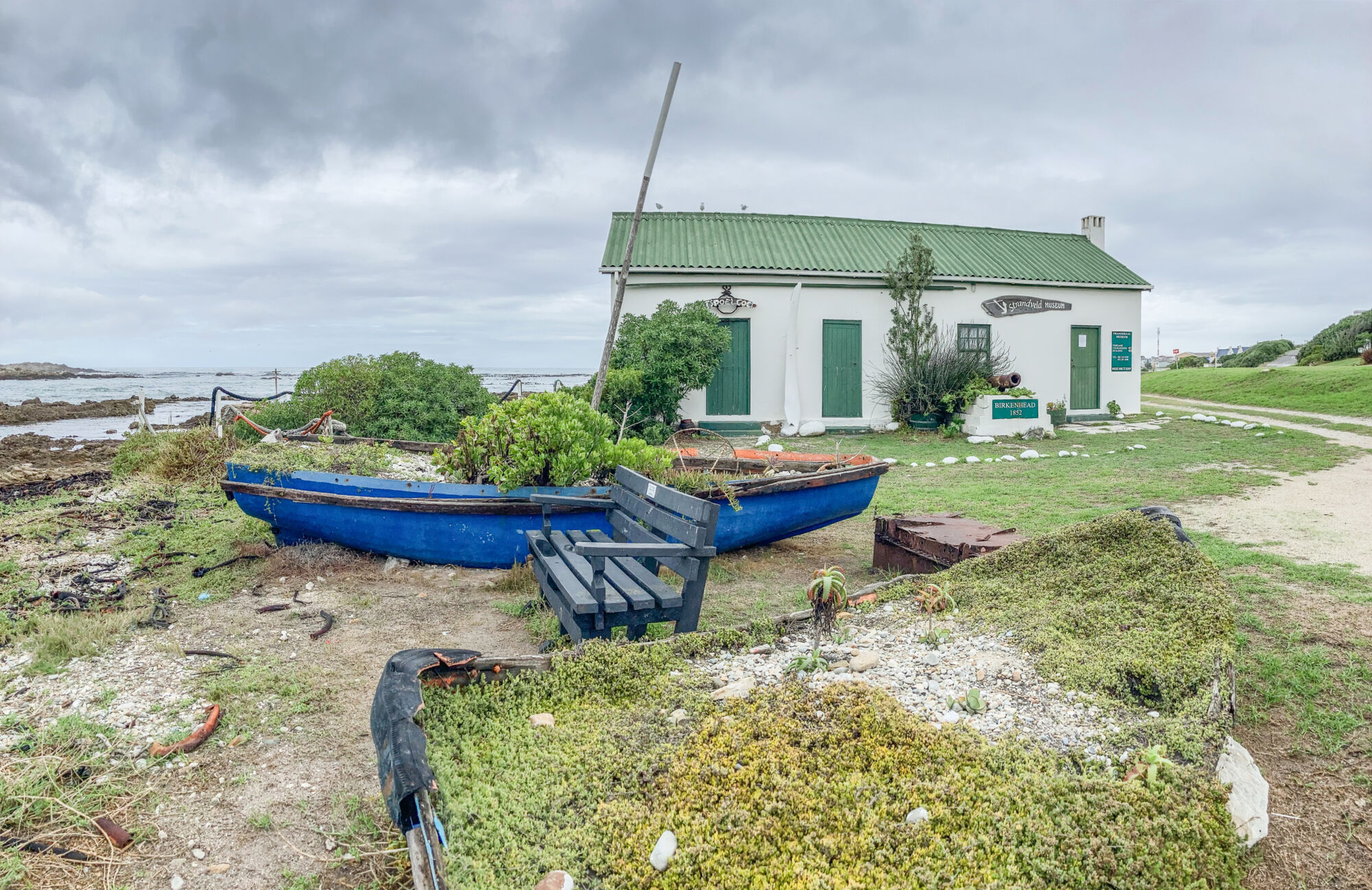
📍: Strandveld Museum
📸: Justin Fox
My journey now took me inland past Baardskeerdersbos to Elim, a pretty Moravian mission village with rows of thatched cottages and an elegant gabled church with all-white interiors. Children played in the streets, ancient fig trees bent their boughs to earth – it couldn’t have changed much since the freeing of slaves in 1834, an event still commemorated in the town.
I pressed on south via Struisbaai to L’Agulhas to visit its famous lighthouse. Within the 30-mile range of Agulhas light, the coast is fringed with reefs on which more ships have been wrecked than on any other part of the South African coast. The limestone structure was completed in 1849, built in the style of the Pharos in Alexandria, one of the seven wonders of the ancient world. Today Agulhas is part working light, part museum, part coffee shop. There are old charts and keepers’ uniforms preserved down the generations, and a large driebeenpotjie used to boil sheeps’ tails to produce fat for fuelling the powerful lamp.
📍: L’Agulhas Lighthouse
📸: Justin Fox
I drove inland to Bredasdorp to visit its wonderful Shipwreck Museum. More than 250 vessels have been lost on this coast and the museum is a fitting tribute to those who perished beneath the waves. It’s crammed with figureheads, anchors, furniture, cannons and other artefacts that washed ashore or were dived from wrecks – fragments of Europe and Asia that have found their final resting place in an Overberg dorp.
About 20 kilometres southeast of Bredasdorp lies a town named after one of this coast’s most famous wrecks: Arniston. Centred around the 19th-century fishing hamlet of Kassiesbaai, it has an old-world charm that many of the rapidly developing coastal towns have lost. Highlight of each day is the bringing in of the catch, when brightly painted fishing boats surf ashore and are dragged up the slipway.
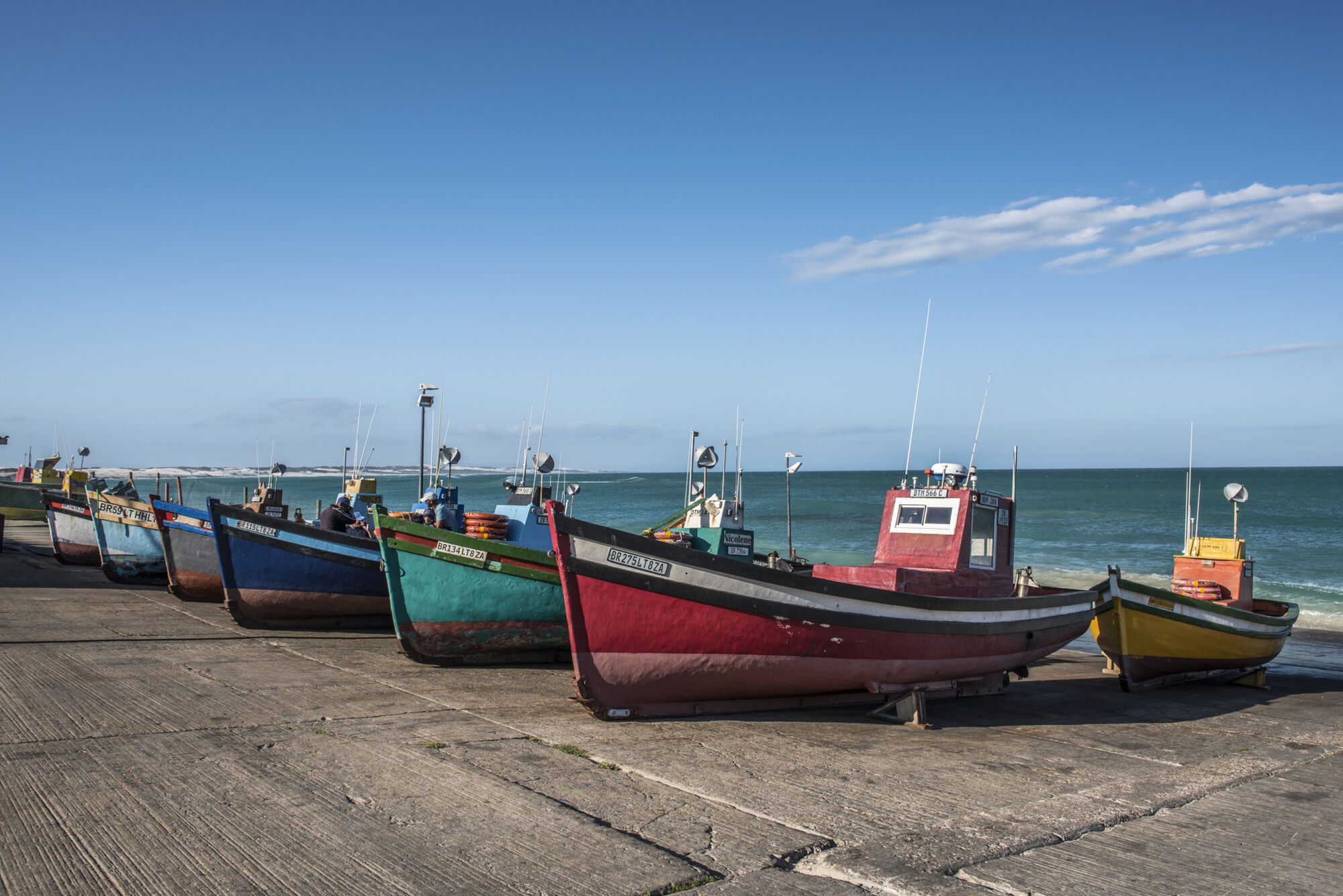
📍: Arniston
📸: Justin Fox
Next, I visited De Hoop Nature Reserve, following a lovely road through hills of limestone fynbos resplendent with proteas, ericas and restios. The beautiful Opstal manor house is fronted by Natal fig trees of outrageous proportions and a large werf. The ‘skew room’, built in 1738, is the oldest structure in the reserve. After the simple fisherman’s dwellings I’d admired in Arnison, the homestead evoked the grander elements of Cape Dutch design: central gables, imported materials, the fine workmanship of Malay slaves and rows of finely proportioned outbuildings.
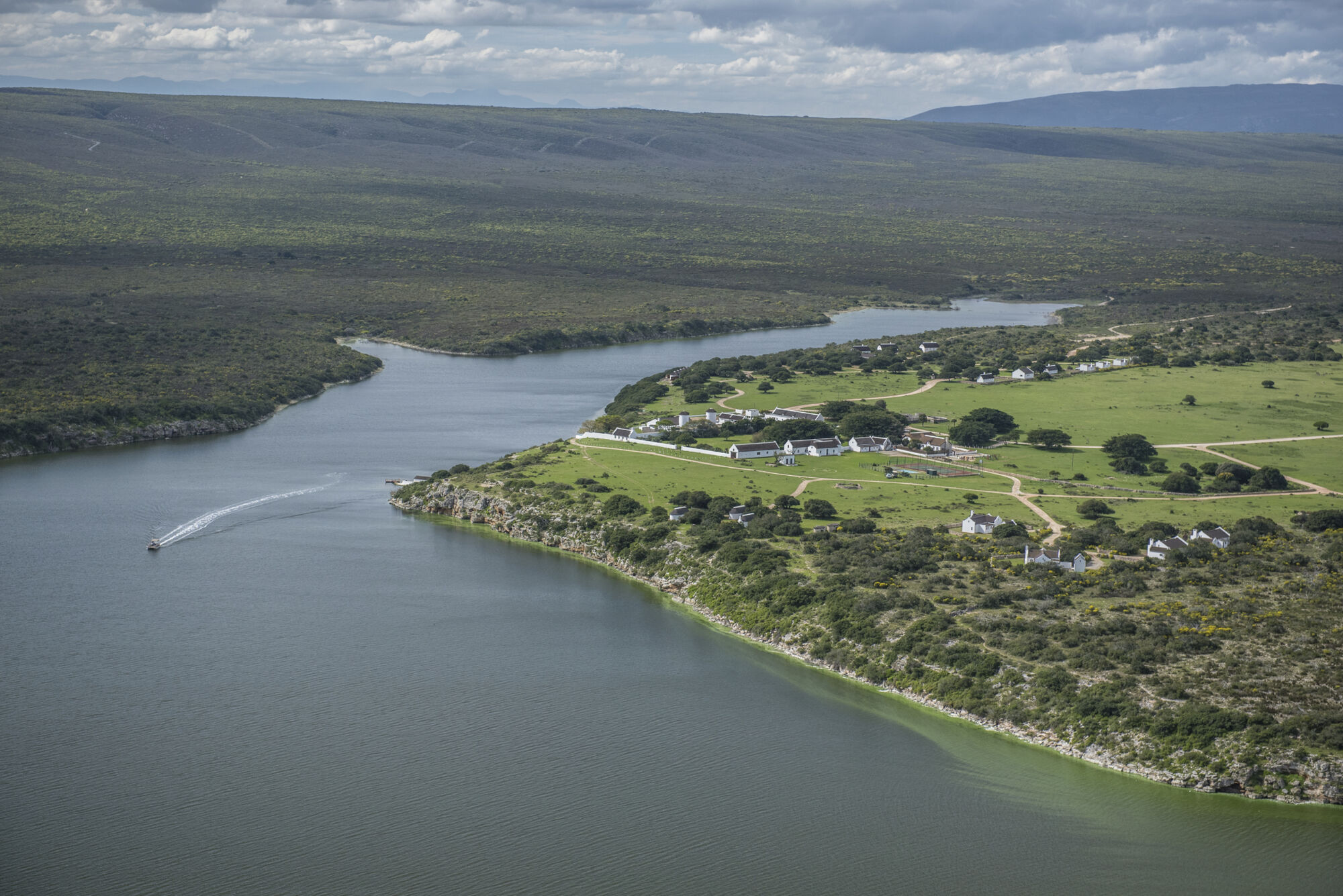
📍: De Hoop Nature Reserve
📸: Justin Fox
A short drive to the coast brought me to Koppie Alleen, a magical spot on a dune above a beach. Southern right whales and their calves wallowed beyond the breakers. It was an elemental, spring view: limestone cliffs, windswept dunes, myriad fynbos, shallows lined with shipwrecks … and bobbing whales.
Koppie Alleen marked the end of my meander. The journey had evoked the bygone ages of trekboers, fishermen, castaways and Khoisan hunter-gatherers. Like Cornwall, Terra del Fuego or Brittany, it had all the compelling elements of the end of a continent: a mood of melancholia, the powerful presence of the ocean, a recognition of lives lost, of the enormous breadth of time … and a sense of permanence.
VISIT IT:
Accommodation in the Cape Overberg is plentiful and varied. Here is where I stayed:
🏨: Cliff Lodgein De Kelders
🏨: Farm 215 near Baardskeerdersbos:
🏨: Arniston Hotel in Arniston
